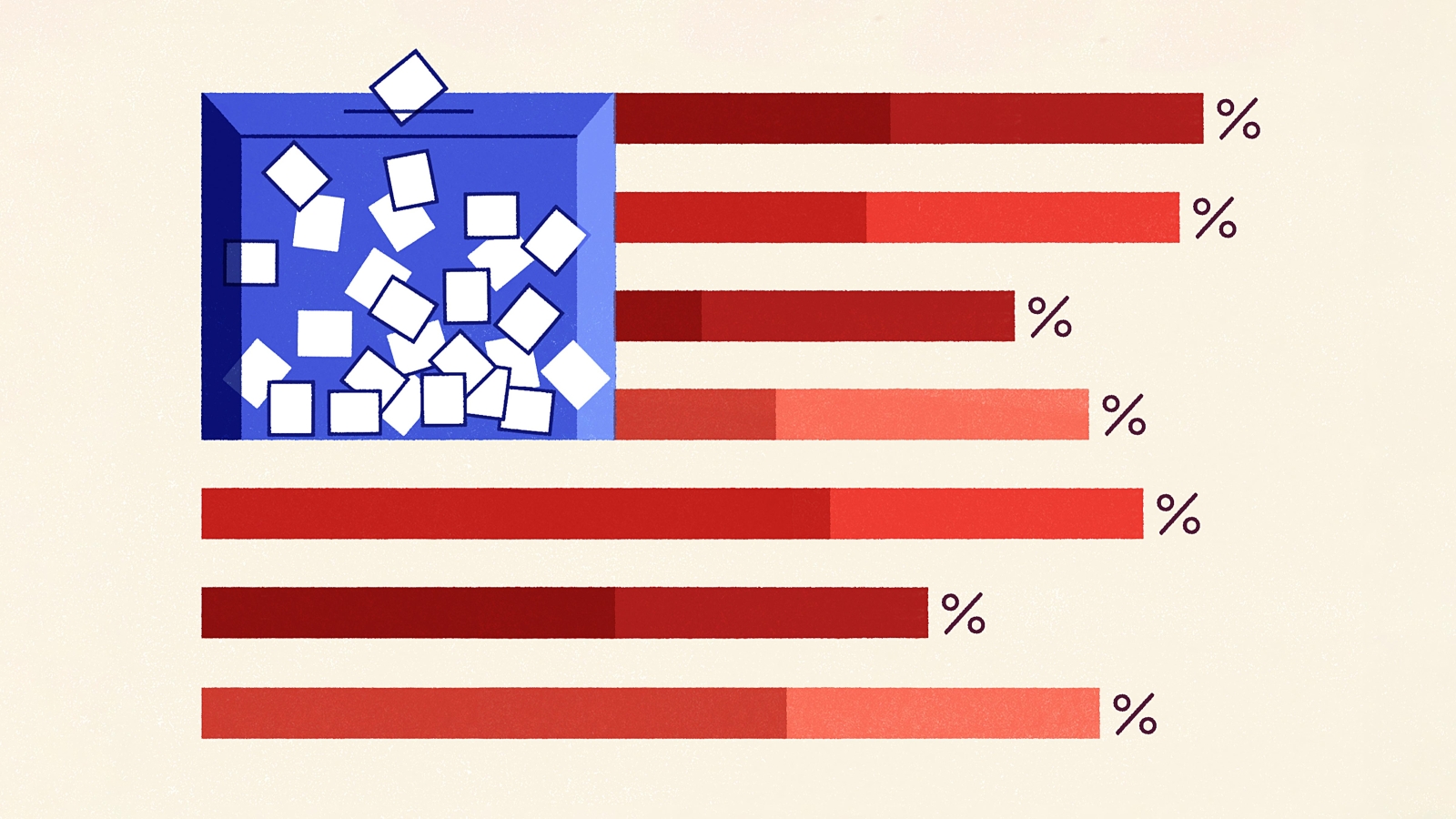What Can Polls Tell Us in 2024?
John Lapinski, Robert A. Fox Leadership Professor of Political Science and director of the Robert A. Fox Leadership Program and the Penn Program on Opinion Research and Election Studies, talks polling in this Presidential election year.

If there is one thing Americans can count on during any Presidential election year, it’s the constant commentary about polls. But how has polling changed in the digital age? How accurately can polls predict election outcomes? What purpose do they serve?
Omnia put these questions to John Lapinski, Robert A. Fox Leadership Professor of Political Science and director of the Robert A. Fox Leadership Program and the Penn Program on Opinion Research and Election Studies (PORES). Lapinski also directs the Elections Unit at NBC News, where he is responsible for projecting races for the network and producing election-related stories through exit polls.
Why do polling?
There has been a lot of discussion within network news and other media outlets about whether we should continue to run polls and in the same way we’ve been doing it. There have been misses with polling recently, primarily in election polls. Is it critically important that people have a sense of who may or may not win an election before election night? I don’t think so, but it is important, given that we live in an electoral democracy, that we have some way of measuring public opinion; otherwise, the people elected to represent us won’t know what we want. Polls are the best way to convey that information. For a healthy functioning democracy, public opinion is important, and the best way to measure public opinion is through polls.
How has polling changed in the past few decades?
It’s tremendously different. At NBC, it used to be that a large percentage of people we called wanted to take our polls. That’s not true now. So, the question is, is the small percentage of people who answer representative of the population we’re interested in studying? Are we able to statistically weight the data? A lot of public opinion researchers have been astonished that as response rates have plummeted, our polls still seem okay, so that’s a puzzle. Polls have lots of problems, but we’ve had success with them, too.
How do pollsters reach people?
The gold standard used to be that we’d use agreed-upon sampling techniques and then do a telephone poll on landlines and cell phones. We’ve seen big differences in response rates when using online methods versus telephone. There are differences in subgroups within a population, and it’s very pronounced with younger people.
We’re doing a huge experiment right now at PORES, running five different surveys, including telephone interviews with both landline and cellphone interviews, a text survey, and two different online methods. We’ll be asking exactly the same questions at the same time. Then we will pull them all together and try to assess whether different respondents answer different survey modes or if the content of respondent answers differ based on mode. You need a multi-method approach to reach a representative group of people today, and then you have to figure out ways to essentially put the people back together into one survey.
What is a poll aggregator?
Aggregators take publicly available polls and average them. RealClearPolitics is an example. Proponents of aggregators say that, given the variability among different polls, an average will yield a more accurate picture. But critics say that aggregators, by including polls of dubious origins, can manipulate the results.
Does polling affect turnout?
In general, polls can’t predict turnout. People say that Biden voters this year are not enthusiastic, and, given that recent elections have been decided by so few voters, that could be pivotal. But polls can’t predict what people will actually do on Election Day. People make assumptions about what the electorate will look like and then bake them into their poll results—it is important to remember that. Sometimes those assumptions are right and sometimes they are wrong, but they are always important to the poll’s results.
You’ve said you think some recent polls have been wrong. How do you know?
Let’s take the February 2024 New York Times/Siena poll that had Trump up five points over Biden. We use a statistical technique called multi-level regression with poststratification, or MRP. It’s a methodology that allows us to take a national poll, break down the results, and come up with state-by-state estimates. Using that technique, Trump leading by five would mean that he would win well over 300 Electoral College votes, probably more than 320 or 330, but that’s completely implausible. We’ve already seen that polls were off in the primaries. We can go state by state and see where polls predicted Trump winning by quite a bit more than he actually did.
One of the beautiful aspects of election polls is that you can determine whether they’re accurate or not because elections happen. Here’s what the poll said, here’s what the results said. Of course, there are data in these polls that certainly are correct—and to me, they are telling us that people aren’t satisfied with their choices on either side.
Any predictions?
This will be a super-close election. I am confident I will be working 100-plus hours at NBC News during election week to project who will be the next president of the United States. And I don’t know who that person is yet.



